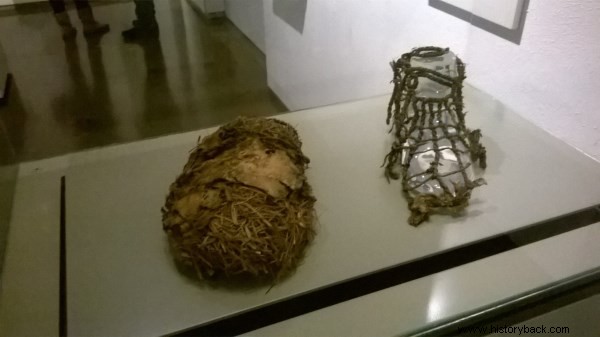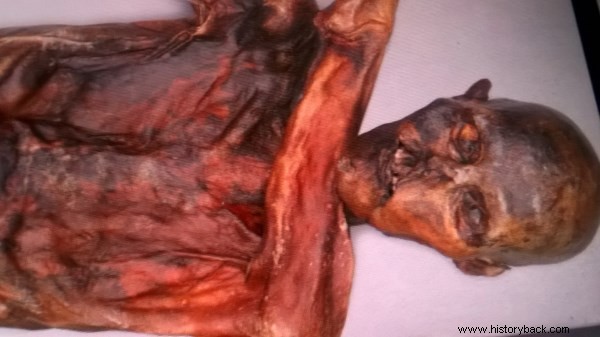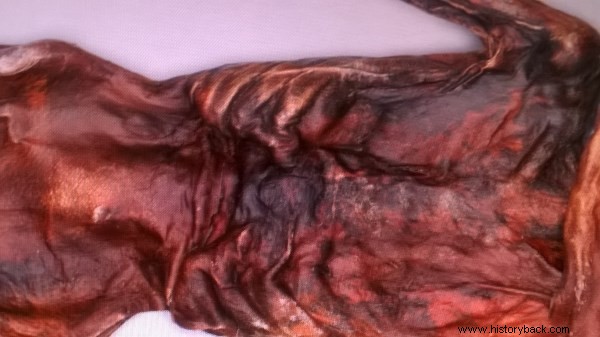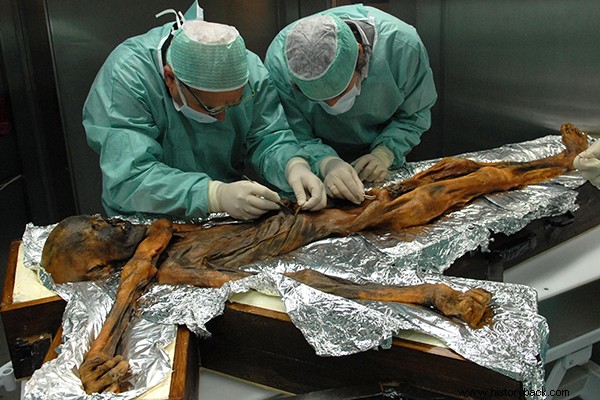Finding of the Mummy: Thursday, September 19, 1991 - 1.30 pm
Ötztal Alps - Giogo di Tisa - 3210 m a.s.l. (South Tyrol, Italy)
The definitive proof of the effective and extraordinary antiquity of the mummy comes from the dating to Carbon 14 :lived over 5000 years ago , at the time when copper is introduced in Europe as a new processing material radically transforms the economy and society.
It is assumed that, at the time of his death, Ötzi was 45 years old, 1.60 m tall and weighed 50 kg.



It can be assumed that Ötzi was a flock owner, chief or influential person in the village.
Ötzi he was almost overtaken by his attackers and hit with an arrow; it seems that with his last strength he sowed his pursuers and reached the rocky hollow where, however, he died from the consequences of the attack.
The high wear of the teeth is due to the chewing of cereals which, ground on stone crushers, mixed with the sand.
The left front part of the upper jaw is also very worn, in fact the teeth were regularly used as a 'tool' to work wood, bones, leather and tendons.
Analysis of the stomach contents revealed that before being killed Ötzi he had consumed extremely high fat food and small doses of a toxic fern.

The analysis of the stomach contents also provided particular information on how foods were prepared in the Copper age . Ibex meat in Ötzi 's stomach it was in fact still very well preserved. From the streaks in the meat's fiber, the researchers were able to recognize that it was a muscle, air-dried and slightly heated (possibly smoked), probably to keep it better preserved.
As for the plant content. in the stomach, the researchers identified monococcus spelled , not ground, and traces of bracken . The monococcus is one of the first cereals to have been domesticated by man and is considered a precursor of wheat. On the presence of the bracken, a toxic plant, the researchers at the moment limit themselves to making assumptions:" It may be that Ötzi suffered from pain caused by some parasites identified in his intestine in previous studies and that he therefore used the fern aquiline as a medicine. But he may also have used fern leaves to wrap food and therefore, some particles may have inadvertently ended up in his meal, "explains Albert Zink, director of the Institute for the Study of Mummies at Eurac Research .
